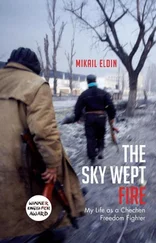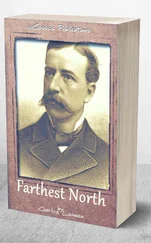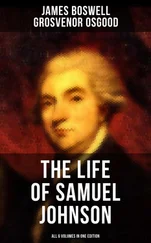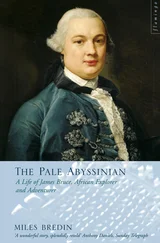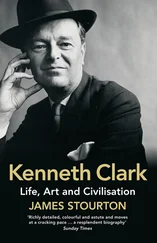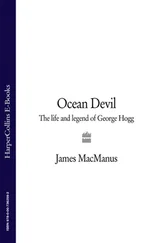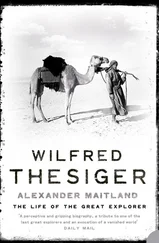Some nettlesome questions remained. Though the police searched the city’s gutters and fields and dragged the Passaic River, they never found the murder weapons. The authorities were also not divulging why Carter and Artis killed three people. Robbery had already been ruled out, and the Evening News reported on October 16 that the police had determined there was no connection between the Roy Holloway murder and the Lafayette bar shooting. Such details were unimportant. The Morning News rejoiced at the arrest, trumpeting on the same day that the newspaper “exclusively broke the news that the four-month-old tavern murders were solved.”
Carter figured his arrest was tied to the November elections. Mayor Graves, prohibited by law from running for a fourth consecutive term, was hoping to hand the job over to his chosen successor, John Wegner. What better way to show that the city was under control than by solving the most heinous crime in its history? After the election, Carter reckoned he’d be set free. *
But sitting in the Passaic County Jail, where each day he was served jelly sandwiches, Carter learned through the jailhouse grapevine that two hostile witnesses had emerged. Alfred Bello, the former con who had been at headquarters following the crime, and Arthur Dexter Bradley, another career criminal, were near the Lafayette bar trying to rob a warehouse on the night of the murders. Questioned by the police that night, Bello said he could not identify the assailants. But suddenly his memory had improved. Both Bello and Bradley now told police that they had witnessed Carter and Artis fleeing the crime scene.
The Passaic County Prosecutor’s Office took the case to a special grand jury empaneled in the basement of the YMCA, convened to investigate the sensational killing of a young housewife named Judy Kavanaugh. On November 30, Carter heard a radio report on the loudspeakers in jail that the grand jury had indicted Kavanaugh’s husband for the murder. Paul Kavanaugh was in a cell near Carter’s. Then, almost as an afterthought, the announcer said: “Rubin ‘Hurricane’ Carter and John Artis were also indicted for the Lafayette bar slayings.”
The twining of the Kavanaugh and the Lafayette bar murders fueled rumors for many years to come. Speculation centered on the role that the mob may have played in persuading the prosecutor’s office to pursue enemies of the underworld. The Mafia connection was more direct in the Kavanaugh case. Eight months after the killing, a small-time hood named Johnny “the Walk” DeFranco died from a slit throat, the victim of a gangland-style murder. Prosecutors put forth a theory that Judy Kavanaugh had been involved in a counterfeiting and pornography ring and was silenced when she panicked, while DeFranco was later killed to keep him silent about her death. Five people were ultimately indicted for one or both crimes, including Harold Matzner, the young publisher of a suburban newspaper company in New Jersey. He had backed a series of articles that tried to link the Passaic County Prosecutor’s Office to the underworld. All the defendants in both crimes, including Matzner, were ultimately acquitted amid allegations of witness tampering and gross misconduct inside the prosecutor’s office. *
Carter’s indictment also generated discussion about the underworld in Paterson. Mobsters had approached Carter about throwing fights, but he had always refused. In theory, this would give the mob an incentive to turn against him—just as the mob had an incentive to turn against Harold Matzner. Rumors circulated that mobsters, seeking vengeance against Carter, gave the prosecutor’s office conclusive evidence of his guilt, but the evidence could never be introduced because of its origins. The rumor is fantastic, but it gained some currency over the years as prosecutors, seemingly armed with little direct proof of guilt against Carter or Matzner, pursed each man with zeal. Other unsettling parallels between the Kavanaugh and Lafayette bar murders would surface in time.
When Carter heard about his indictment on the radio, he was shocked. Even though he had hired a lawyer, he still believed that the authorities planned to release him. But after being jailed for about six weeks, he guessed that prosecutors sought the indictment against him because they feared a possible lawsuit against Passaic County for false arrest. (Carter had no such intention.) If a jury returned a verdict of not guilty, prosecutors could say they had done their best with the evidence they had. Carter’s shock soon gave way to fury and fear. He was now trapped in jail until his trial. With little to do, he began writing letters to people who had seen him on the night of June 16 and who could serve as his alibi witnesses.
To those who knew Carter, the accusation didn’t make sense. His friends and family believed he was capable of killing three people, but not in the fashion of the Lafayette bar murders. Despite his inflammatory comments in the Saturday Evening Post , Carter was known for advocating self-defense, specifically against police harassment. Violence was justified, indeed necessary, against aggressors, he argued, but not against innocent bystanders. Why would he walk into an inoffensive bar and shoot a room full of strangers? It never made sense, and the authorities offered no explanation.
Moreover, when Carter did exact revenge and lash out, he used only his fists. The rules of the streets were clear. Punks and sissies used guns or knives; warriors used their fists. If Carter wanted to punish or even kill someone, he would consider it an insult to his manhood if he did not use his bare hands. He would want the victim to know that it was “Hurricane” Carter meting out his punishment. Carter owned and occasionally carried guns, but that was because of his own fears—perhaps exaggerated, perhaps not—that he would be shot at. What is clear is that until the Lafayette bar murders, no one had ever accused Carter of pointing a gun at another person.
The Lafayette bar shooting “wasn’t Rubin’s style,” said Martin Barnes, an acquaintance of Carter’s who was elected mayor of Paterson in the 1990s. “If you were bad, you did it with your hands, and Rubin did it strictly with his hands.”
Carter initially wanted F. Lee Bailey to represent him, but the famed defense lawyer was already embroiled in the Kavanaugh case, so instead he hired Raymond Brown from Newark. Brown was known for being the only black lawyer in the state to take on whites. He did not, at first glance, look like a dragon slayer in his rumpled brown and gray suits, Ben Franklin-type bifocals, and a plaid hat. He smoked a pipe and ambled around in a kind of slouch, as if he were getting ready to sit down after every step. But he was an expansive orator whose voice filled a courtroom, a firebrand with a rapier wit. In his fifties, he had short, dust-colored hair and a high yellow complexion; in fact, he was light enough to pass for white. When he was in the Army, an officer candidate once told him, “Be careful, some people will think you’re a nigger.” “I am!” Brown shot back.
The trial against Carter and Artis took place at the Passaic County Court on Hamilton Street, where grandeur and tradition welcomed every visitor. Completed just after the turn of the century, the building featured large white Corinthian columns and a ribbed dome with a columned cupola; on it stood a blindfolded woman holding the scales of justice. In the courtroom where Carter was tried, the judge’s large dark wood desk stood on a platform in dignified splendor. On the desk lay a black Bible with its red-edged pages facing the gallery. An American flag stood to the side.
Paterson was a tinderbox as jury selection began on April 7, 1967. The establishment was terrified that blacks would riot if the defendants were found guilty. Black youths had rioted three summers before, and a conviction of Paterson’s most celebrated, most feared, most hated black man could trigger another firestorm. To quell any possible disturbance, the courthouse was transformed into a fortress, with extra uniformed and plainclothes police perched in the building’s halls and stairwells, on the streets outside, and on neighborhood rooftops. The roads around the building were blocked off. The authorities questioned known troublemakers and even rummaged through garbage cans in search of contraband. According to an internal FBI report dated May 27, 1967, an informant told the agency that in the “Negro district, five large garbage cans were filled with empty wine and beer bottles and some beer cans … and these might be a source of Molotov cocktails … and this condition could be caused by the feeling of people regarding the Carter-Artis trial.”
Читать дальше

